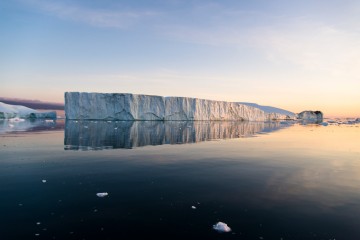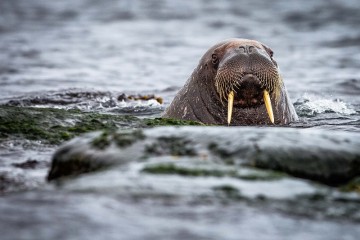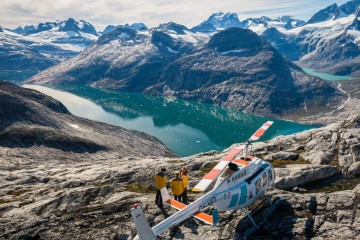The Arctic region may well cover regions of eight countries, yet Arctic cruises are not available everywhere, for obvious reason. There may be human habitation, this far north, but this expansive region is still remote and much of it is inaccessible. The best casting-off points for Arctic expeditions are in Norway (namely the ‘polar bear’ hub island of Spitsbergen), Greenland and Iceland (most cruise itineraries meander between these two neighbouring countries), Canada (the springboard for Northwest Passage cruises) and the Russian region of Chukotka, one of the least visited and remotest Arctic region of all, home to lesser-visited archipelagos like Franz Josef Land, bursting at the seams with an astonishing amount of Arctic wildlife.
It's easier to choose the right Arctic cruise when you have a general overview of the most popular itineraries on offer and which countries can be seamlessly visited in the one expedition journey.
Here are the main options:
Spitsbergen
This northern Norwegian archipelago is renowned as the European polar bear hub and its main island, Svalbard, is about the best place in the world to see them. Svalbard is an Arctic cruising destination of its own accord, although it is also a great springboard for cruises to nearby Arctic regions. Svalbard is the #1 Arctic cruising choice, due to its many historical and cultural attractions as well as wildlife spectacles. Its proximity to the European mainland, moreover, means cruises to and around Svalbard can be the best value-for-money expeditions around.
Greenland
The largest island on earth is an exquisite Arctic cruise destination and one of its most distinctive, given that it doesn’t boast much cruising infrastructure at all. A land of deep dramatic fjords and magnificent glaciers, Greenland is mostly visited and explored ‘on the fly’ aboard expedition ships that depart either from Svalbard and Iceland (for its eastern coastline) or the Canadian Arctic (for its western coastline). Small clusters of very interesting communities can be visited along both sides of the island’s coast, with the western being particularly fascinating. Greenland seems to exist in a world all its own and is especially grandiose – adding a few extra days to a standard Arctic cruise to fit in a visit is one of the best decisions you could make.
Iceland
Given the current position of the magnetic North Pole, the Greenland Strait (the body of water between eastern Greenland and western Iceland) is right at the heart of the Northern Lights viewing oval, making an Iceland + Greenland Arctic cruise the most rewarding option if travelling in September. Even outside the Aurora viewing season, however, you’ll be privy to spectacular fjords and glaciers when you visit this region and can easily extend your travels by including an on-land journey through Iceland to discover breathtaking waterfalls and volcanoes.
Canada
The Canadian High Arctic really seems to have it all, a spectacular array of inlets, fjords and endless ethereal tundra plains, inhabited and visited by a flurry of Arctic wildlife species. Arctic cruises which visit both Canada and Greenland are renowned for offering the best whale-watching experiences in the entire Arctic region, with several whale hot-spots found in this corner.
The North Pole
Only a handful of ice-strengthened expedition ships make the journey to the North Pole every summer, the exclusive endeavour being the longest and most expensive Arctic cruise option of all. The two main options are North Pole cruises which depart from Russia (usually lasting two weeks and including stops in the Franz Josef Land Archipelago) or, more conveniently, departing from Svalbard. The latter option is out of this world: a month-long voyage that combines the best of Svalbard and the cruising to the geographic North Pole.





































